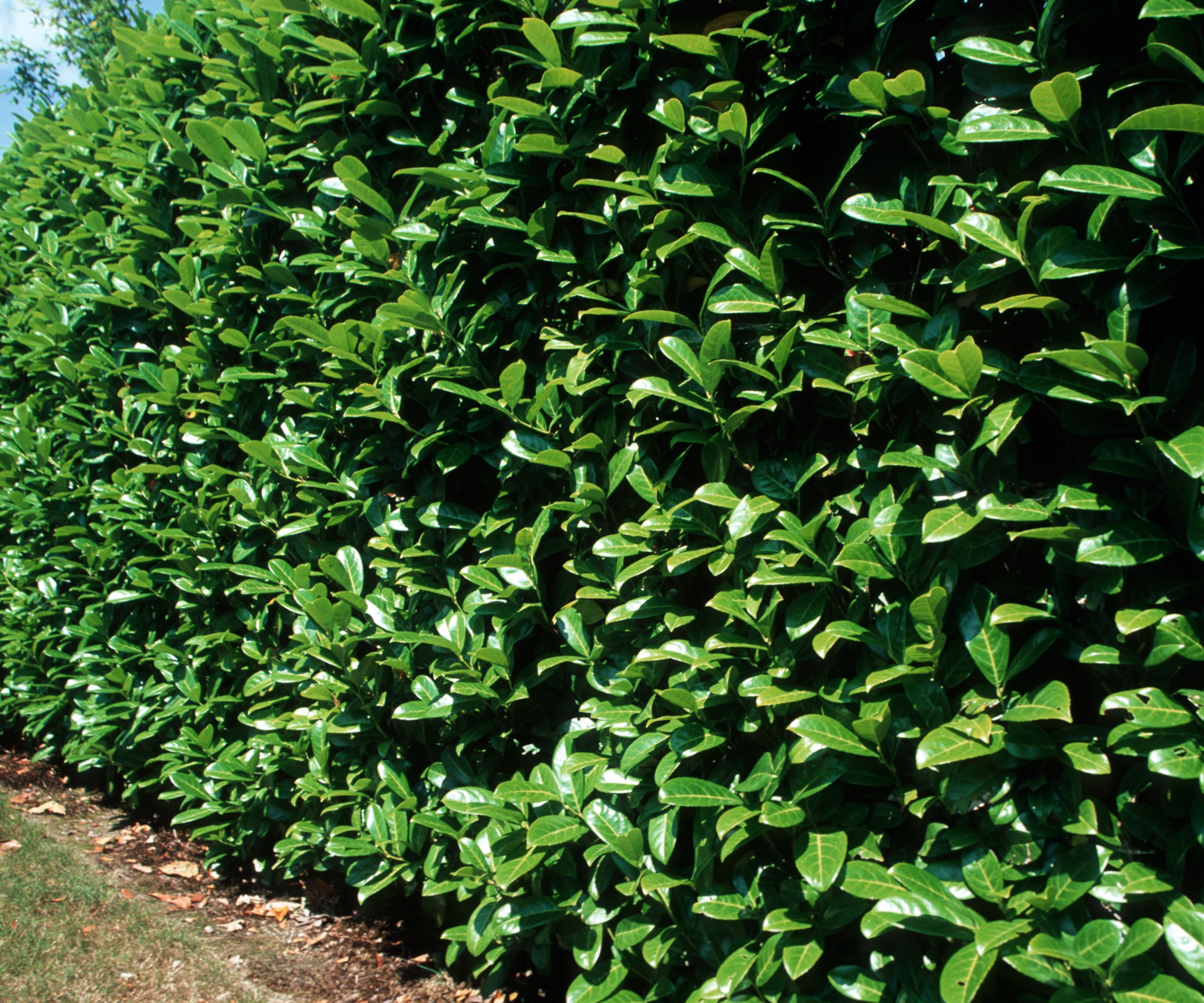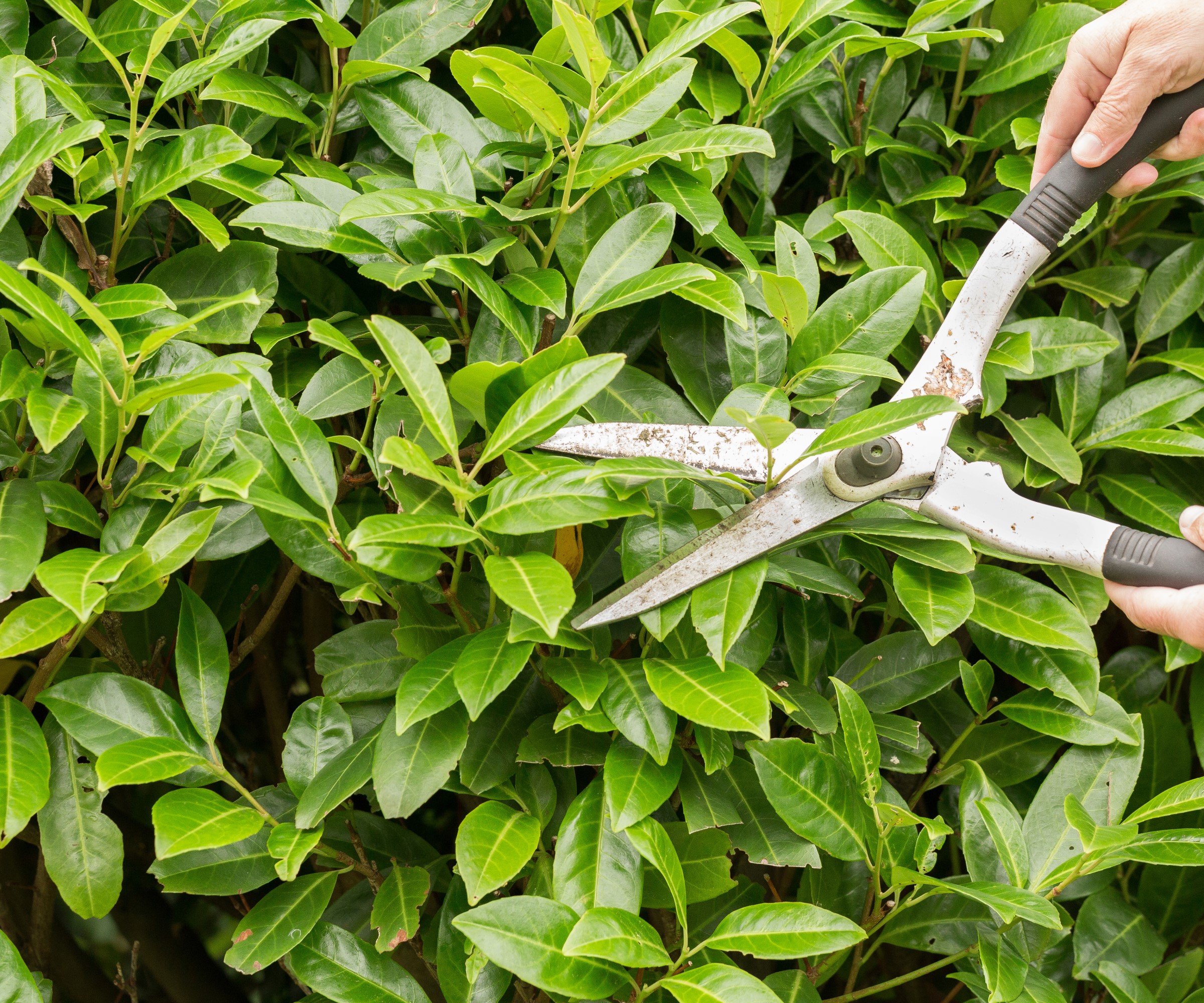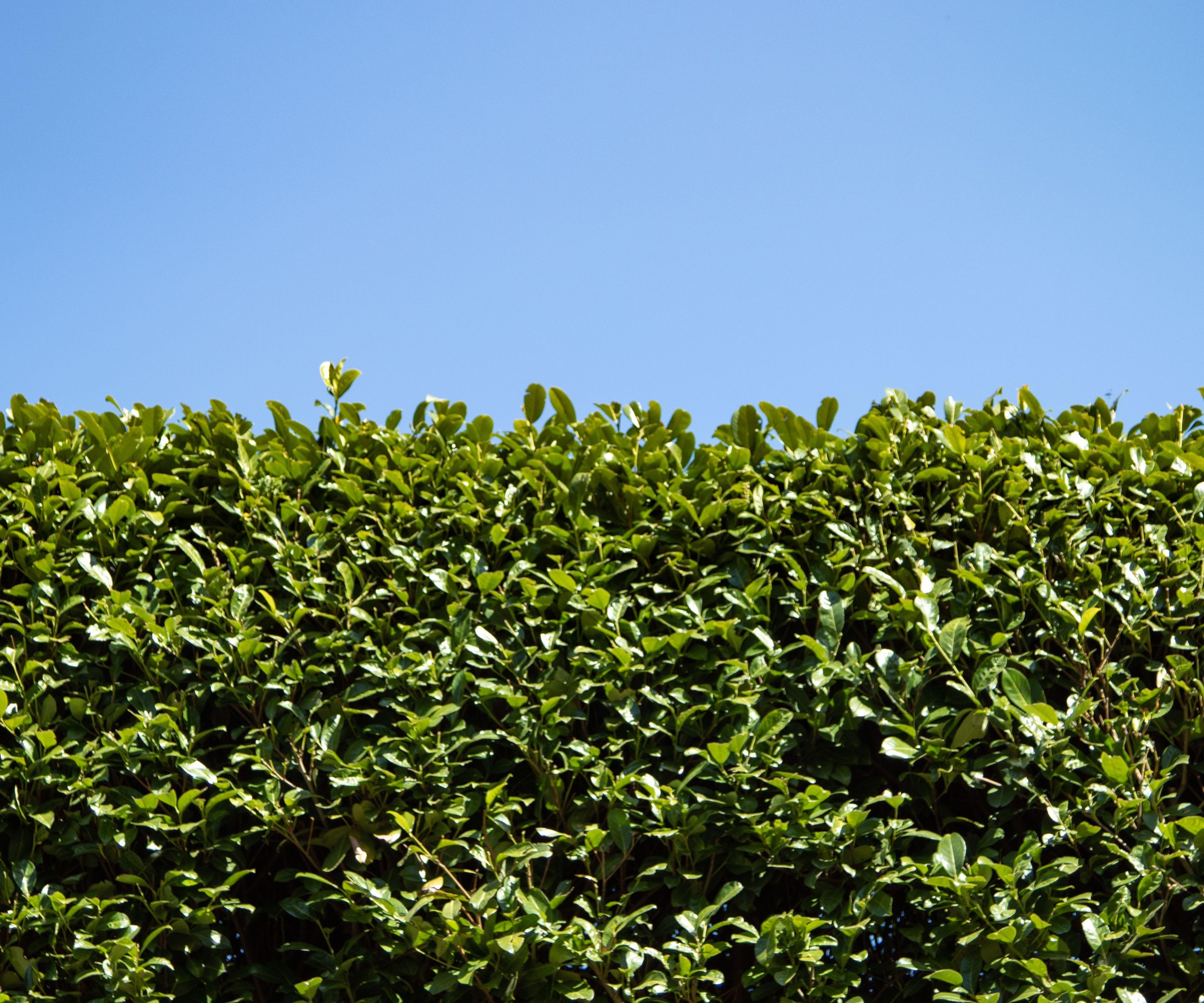How and when to prune a laurel hedge to stop it dominating your yard
Our expert laurel pruning tips will prevent it spreading quickly and taking over your precious outdoor space


It's one of the most popular plants for a hedge, and for good reason. But keeping on top of pruning laurel is key if you don't want it to get out of control and take over your backyard.
Laurel offers a dense and evergreen screen thanks to its large and glossy green leaves. However, whether you have a cherry laurel, portuguese laurel, or skip laurel hedge in your garden, you may find yourself looking at it, especially if it has become a bit unruly, and wondering when to prune it.
Rest assured, pruning laurel hedges is a fairly straightforward maintenance task. Once the plants are established, cutting laurel hedges is all about maintaining the desired shape and not letting it get out of control – as laurel is a very fast growing shrub. If it does need radically renovating then it is a very tough plant, you just have to make sure it is the right window for vigorously pruning laurel before reaching for those tools.

Cherry laurel can grow up to 23 inches each year so needs to be kept in check

Drew is a former professional gardener who worked in historic gardens for the National Trust in the UK for many years. He was involved in large-scale annual hedge-cutting regimes in all these gardens. During his time as part of the gardens team at Hanbury Hall in the UK, he regularly pruned lots of laurel hedges around the gardens and wider estate of the 18th century house.
Why is pruning laurel so important?
The laurel family is regarded as a good fast-growing hedge option due to its rate of growth, meaning it can form a thick hedge quickly. It grows very densely also, with its large evergreen leaves allowing it to block unsightly views, reduce noise from busy roads, and act as a good privacy hedge in case of prying eyes.
It is this fast growing nature, however, that means pruning is such an important task. Left to its own devices laurel will grow tall, can reach up to 15-20ft, and very easily start to get out of control. The hedges, if untouched, can become wider and wider and start to take up more space in your backyard.
‘The main issue with laurel is they grow wide very quickly and, if you are not careful, they completely take over the space,' says Nick Grey, CEO of Gtech.
It can, however, be easily kept small by pruning and can be kept clipped as a formal hedge.

Thick and evergreen cherry laurel leaves form a dense screen
What tools do you need for pruning laurel?
Cutting laurel hedges requires sharp and clean garden tools, as this will help make clean cuts that will heal quicker. It is thought in some circles that you should only use hand tools in the form of secateurs and loppers when pruning laurel. This is due to the fact that you would ideally remove whole leaves, rather than cut leaves that will brown as they die back - making the hedge look unsightly.
My preferred tools for pruning laurel would be a good pair of bypass pruning shears, such as the Fiskars PowerGear2 Pruner, and some compound action loppers, like the Tabor tools bypass loppers, for larger branches.
Paul Hicks, Product and Marketing Manager at STIHL, claims that mechanical tools can realistically be used, however, that is predominantly just for spring pruning and not winter work.
‘Laurel is best trimmed with shears, secateurs, or a hedge trimmer,’ he adds. ‘While some may advise avoiding a hedge trimmer as the part trimmed laurel leaves could look untidy when having just been trimmed, if you time your trim when the hedge is actively growing, the new growth will quickly cover any messy edges.’
Paul advises that, as hedges can be attractive hedges for wildlife, people ‘make sure to carefully check’ their laurel for any nesting birds before reaching for any tools. As well as tools for cutting, making sure to have equipment to clear up any debris around the base of the hedge to keep it looking neat and tidy is also very important. These heavy-duty gardening bags from Amazon are ideal for clearing away the waste material.

Using hand tools and removing whole leaves can prevent the hedge looking brown and untidy
A step-by-step guide to pruning a laurel hedge
A laurel hedge should be pruned to a slight taper to allow the lower leaves to get access to light and air. Starting at the base of the hedge and working upwards is recommended, to ensure prunings fall clear of where you are working and not catching on any longer lower branches, and also to prevent them getting in the way as you are pruning.
Morris Hankinson, director at Hopes Grove Nurseries, gives the following advice for how to prune a laurel hedge:
- Determine the desired shape and size of the hedge before you start making any cuts.
- If the hedge is overgrown, you may need to thin it out by removing some of the inner branches. This will allow more light and air to reach the center of the hedge.
- Begin by removing any dead, diseased, or damaged branches.
- Trim the sides of your laurel hedge, make the cuts at a slight angle and following the natural shape of the hedge.
- Trim the top of the hedge to create a flat surface. Make sure to leave the hedge slightly wider at the base than at the top, as this will help to prevent the base of the hedge from becoming bare.
- Remove any stray branches or twigs that do not fit the desired shape.
- After pruning, water the hedge well to help it recover from the pruning.

Laurel hedges can reach up to 20ft tall if left un-tamed
When to prune a laurel hedge
A laurel hedge needs trimming at least once a year due to its fast-growing nature. This varies depending on variety, but the fastest-growing ones, like cherry laurel, can grow between 11-23 inches per year.
Tammy Sons from Tennessee Wholesale Nursery, which grows over 20,000 schipp and cherry laurels a year, advises pruning laurel in late fall or early spring.
She says: 'Because the sap is in the roots it's safe to trim when plants are dormant. Dormancy simply means the sap goes from the branches to the roots in late fall to mid spring.'
Although never truly dormant as laurel is one of the best evergreen shrubs, more radical pruning to get the desired shape is recommended for late winter or spring. Nick Grey warns, however, that this can leave them looking ‘very woody’ and caution should be taken to avoid taking all the growth from the plant’s crown.
‘If your laurel bush is very overgrown, do it in two stages; first cut back the width hard with an angle which isn’t south facing to ensure that all the surfaces get sunlight,’ says Nick. ‘This will make them bud out nicely. In late spring when the sides have fully formed leaves, you can then cut the top back hard.’
Sign up to the Homes & Gardens newsletter
Design expertise in your inbox – from inspiring decorating ideas and beautiful celebrity homes to practical gardening advice and shopping round-ups.

Drew’s passion for gardening started with growing vegetables and salad in raised beds in a small urban terrace garden. He has worked as a professional gardener in historic gardens and specialises in growing vegetables, fruit, herbs, and cut flowers as a kitchen gardener. That passion for growing extends to being an allotmenteer, garden blogger, and producing how-to gardening guides for websites. Drew was shortlisted for the New Talent of the Year award at the 2023 Garden Media Guild Awards.
-
 5 surprising but brilliant ways to clean with old socks – from perfectly buffing stainless steel to deterring pests naturally and more
5 surprising but brilliant ways to clean with old socks – from perfectly buffing stainless steel to deterring pests naturally and moreTackle dust in tricky corners, clean your mirrors and even banish bad odors with those rogue single socks
By Andy van Terheyden Published
-
 How to grow astilbe – expert advice on cultivating this shade-tolerant flowering perennial
How to grow astilbe – expert advice on cultivating this shade-tolerant flowering perennialShade-tolerant and pest-resistant - astilbe are hardy and tough perennials that can thrive in many settings
By Ellen Wells Published